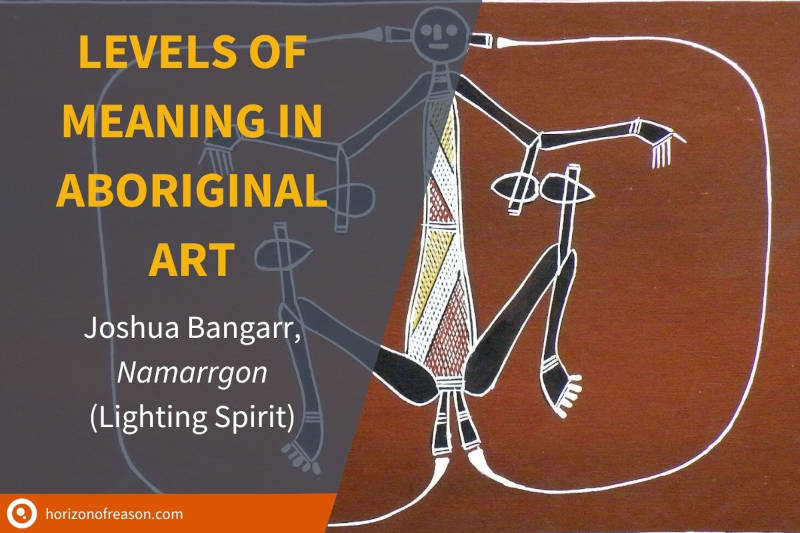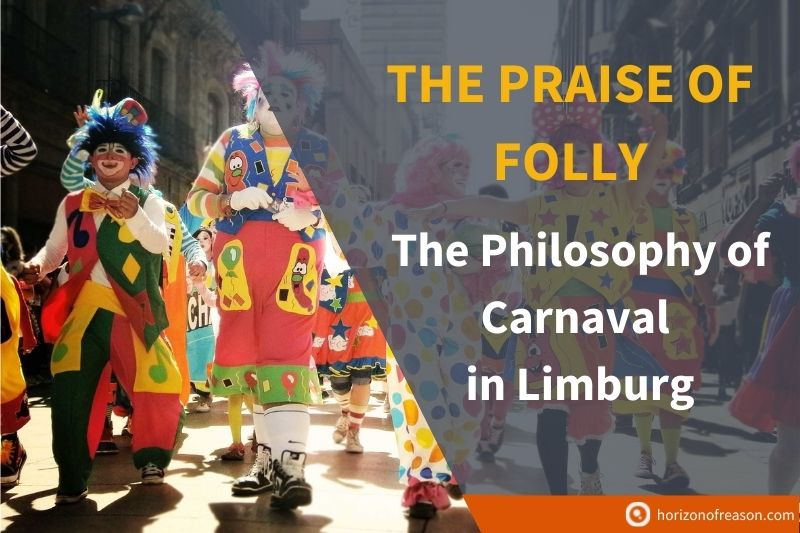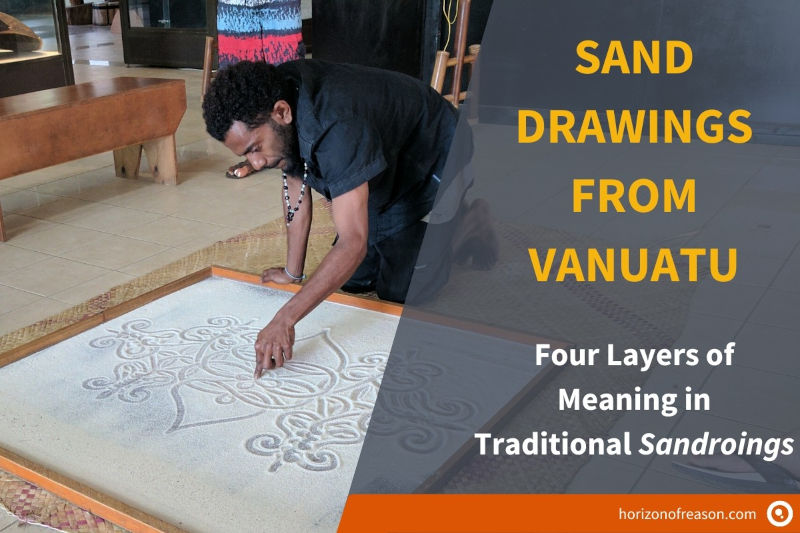
Sand Drawings in Vanuatu: Layers of Meaning in Sandroings

Peter Prevos |
1334 words | 7 minutes
Share this content
Sand drawings are an ancient form of art practised across space and time. Ancient Greek mathematicians studied geometry by drawing figures in the sand, and the dot paintings from central Australia started as drawings in the sand. The Tchokwe people in Angola draw pictures in the sand to illustrate their stories, and most of us would have made pictures in the sand as a child. The people of Vanuatu have their own intricate art of creating sand drawings, or sandroing as they call them.
Drawing an image in loose sand is possibly the most ancient form of art because it does not require anything but sand and a finger or a stick. The history of sand drawings is unknown because of the ephemeral nature of the work. A gust of wind or a swipe with the hand and the most intricate drawings will forever disappear.
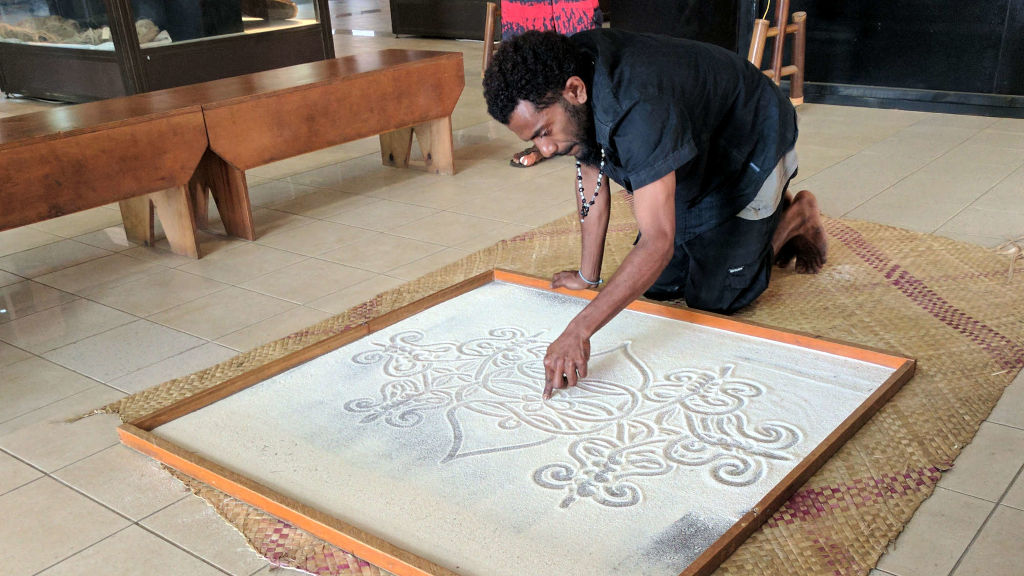
The Sand Drawings of Vanuatu
While enjoying a short holiday in Vanuatu, I encountered another fascinating form of sand drawing in the National Museum of Vanuatu in Port Vila. These sand drawings, or sandroing in the local Bislama language, are a spellbinding form of art. These works of art consist of intricate patterns that hide several layers of complexity that appear in front of your eyes as the artist traces his finger through the sand.
The artists of Vanuatu create their art by tracing a continuous line through a thin layer of volcanic sand. The image only exists at the moment it is created, and the artist quickly erases it or it, is dissolved by the elements. UNESCO recognises these fleeting works of art as part of the Intangible Cultural Heritage of Humanity. This global status helps The Ni-Vanuatu, the original inhabitants, to preserve their traditional form of art.
Expressions of art such as sandroings deserve their status as intangible heritage because they represent much more than beautiful lines in a layer of sand. These drawings have a deep cultural meaning that goes beyond a rational description of the patterns they describe. This article explores the four layers of meaning within the sand drawings of Vanuatu.
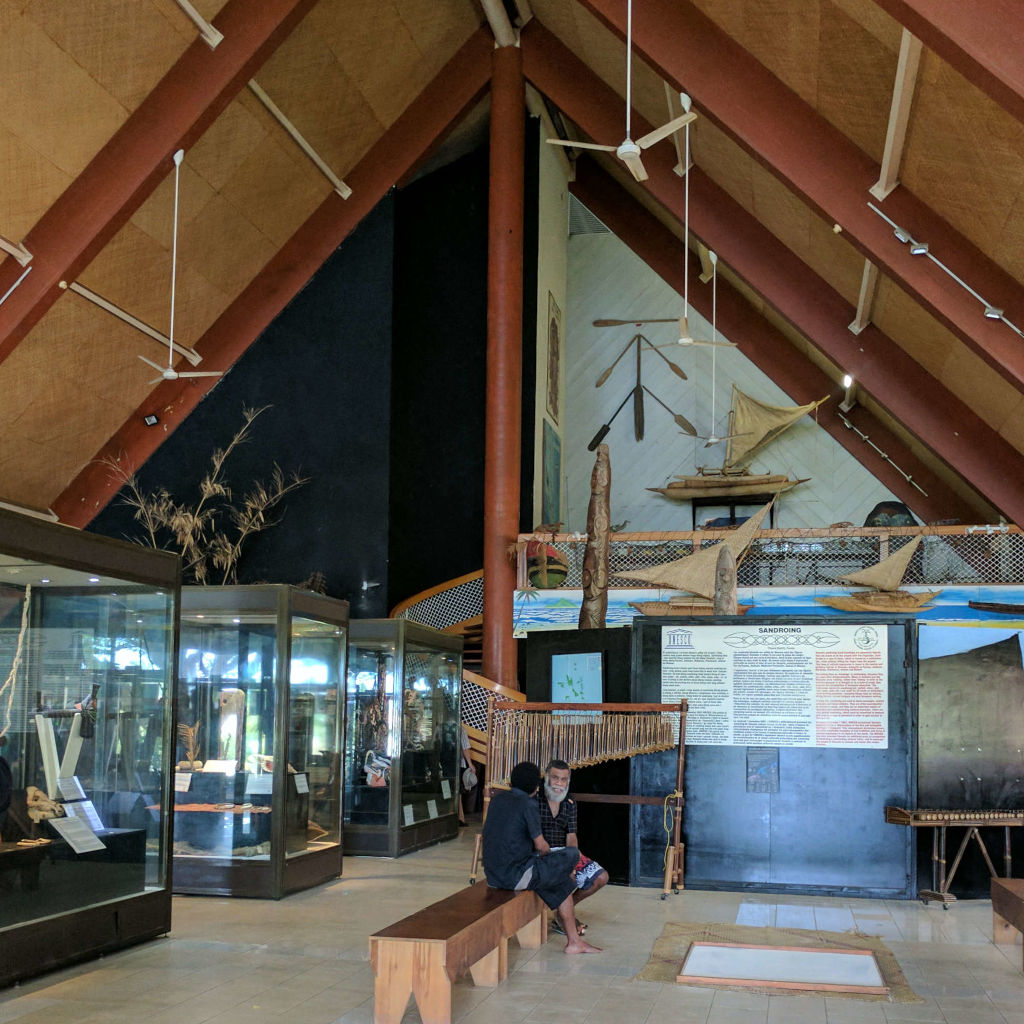
Creating a Sandroing
Sandroings are both a static work of visual art and dynamic performance. In the visual arts, the process of creating the painting or sculpture is usually hidden from view. We only see the final creation after the artist has completed it. In performance art, the work is created in front of an audience. Performance art does not result in anything tangible, but it creates an intangible experience. Vanuatuan sand drawings combine aspects of both performance art and the visual arts because the works are produced in front of an audience. Unlike performance art, the sandroing performance results in a final composition.
The drawing only exists at the moment that it is created and shortly after that. A sandroing is as much about the performance as it is about the final result. The best way to fully appreciate sandroings is to watch the artist create them. This video, taken at the National Museum of Vanuatu, shows how the artist creates draws a grid and the weaves the intricate pattern in one smooth motion. ## Interpreting Sand Drawings
Anthropologist Bernard Deacon was the first Westerner to describe the sandroings. He lived among the local tribes in the 1920s and illustrated more than a hundred different designs. Tragedy struck just as Deacon was about to return home and suddenly died of Blackwater fever. The locals had another explanation as they thought that he was killed by spirits because he desecrated their sacred spaces. After his death, Deacon inspired many anthropologists, and Camilla Wedgewood published his work on the sand drawings in 1934.
The Vanuatu sandroings conceal layers of deeper meaning beyond the skilful drafting of complex squiggly lines. The first two levels of meaning are exoteric. Anyone who experiences the drawings and is willing to learn about them can know these levels. At the deeper levels, you need to be initiated to understand what the design means. The last two levels are esoteric and are only fully known to the initiated.
First Level
At the most superficial level, we can describe a sandroing as a layer of fine volcanic sand in which the artist draws a geometric pattern with his fingers. In many instances, the artist tells a story while she moves her finger through the sand. The drawings illustrate the story as the artist simultaneously speaks and draws. Aesthetically, the Vanuatuan sandroings have a lot in common with the intricate patterns of Celtic knots and Islamic interlace patterns.
The drawings are not just a beautiful line composition, but they are an also written language. Some pictures convey simple messages such as: "I am not home now, I am in my garden", or more complex messages about life after death. In more recent times, the typical geometry of the sandroings has been developed into an alphabetic writing system. People on Pentecost Island use the Avoiuli script which is an excellent example of how traditional and contemporary culture merge to form new expressions.
Second Level
At the second level, we can describe the drawings geometrically, as shown in the drawing by Deacon. The sandroings follow mathematical patterns and anthropologists in the early twentieth century were surprised that these 'primitive'; people were capable of abstract reasoning. When Deacon reproduced these drawings, he used a ruler and compass to express their mathematical complexity. The illustration below shows a turtle that requires more than one hundred steps to describe.
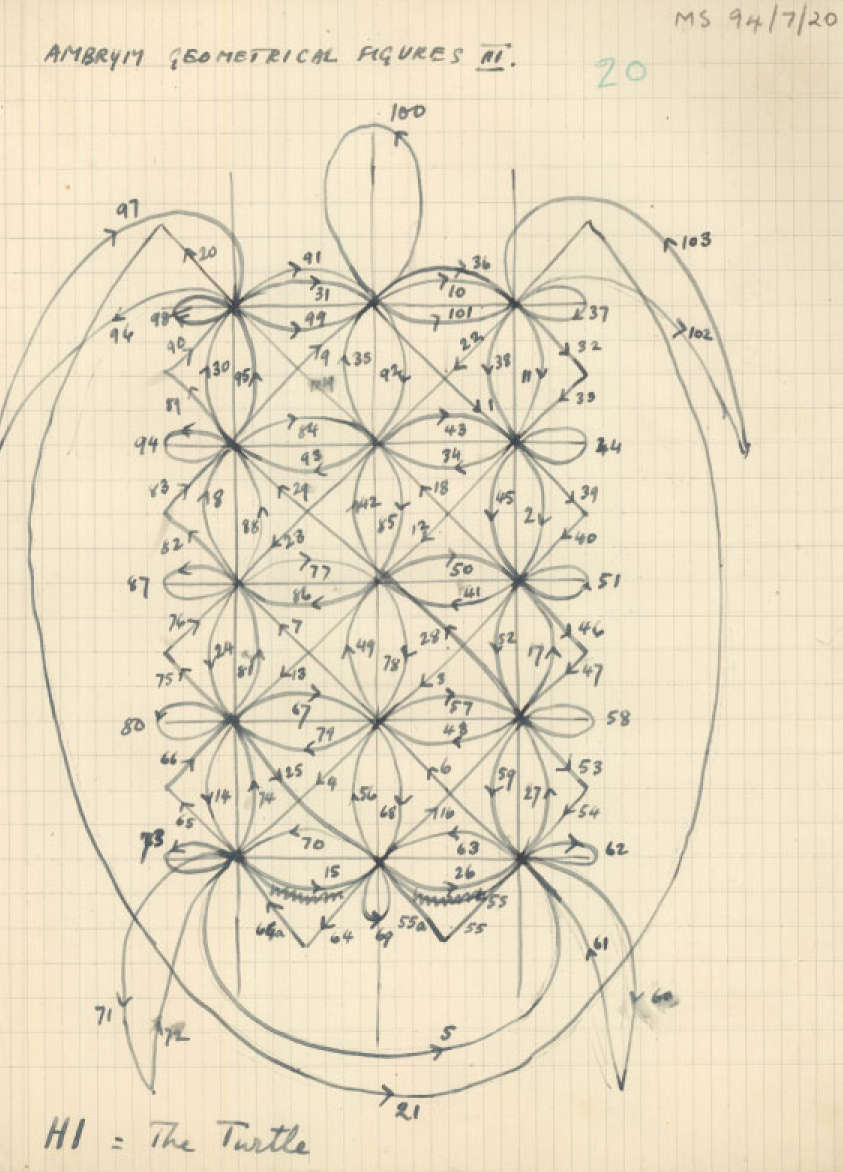
Mathematicians model these drawings using graph theory. Sandroings show that a mathematical mind does not require a written language. The field of ethnomathematics studies abstract expressions found in cultures that have no fully developed writing system. The sandroings show that the Ni-Vanuatu who developed this form of art had a finely developed sense of geometry.
Third Level
At the penultimate level, the drawings are a mnemonic device to communicate complex aspects of local culture. At this more profound level, these drawings illustrate the stories that the artist tells during their creation. These stories can be straightforward and fun but also explain more profound aspects of their culture such as cosmology, kinship and religious wisdom.
Australian anthropologist Stephen Zagala has worked in Vanuatu to preserve this precious tradition. He describes the philosophical nature of these drawings. One such drawing illustrates how people deal with secrets. If an outsider asks a local about hidden aspects of their traditions, the answer will be indirect and in different directions. The sand drawing that explains this concept expresses this idea with a weaving line that takes unexpected turns. The complete drawing has a small diamond shape in the centre that represents the desired wisdom.
Fourth Level
At the fourth level, we enter the horizon of reason. This level is where the deeper mystical meaning of the drawings resides, which is only known to the initiated. Some compositions have to be studied by individuals so that they understand their journey in the afterlife. These drawings express the esoteric aspects of local culture which can only be understood by the initiated, by those people that fully understand the context in which their culture exists.
Sandroings
Vanuatuan Sandroings express an ancient way to think about art. Not art as something that is displayed in a museum but as a way to communicate their culture of beliefs. Unfortunately, this form of art is under threat is fast becoming a museum piece itself, drawn for the amusement of tourists. The reports of anthropologists past and present play an essential role in preserving some of the traditional knowledge, and I hope this article will make you see the traditional culture of Vanuatu in all its intricate beauty.
The video below shows a man demonstrates several sand drawings. Filmed in Dixon Reef, Malakula Island, Vanuatu, 2015.
Share this content

